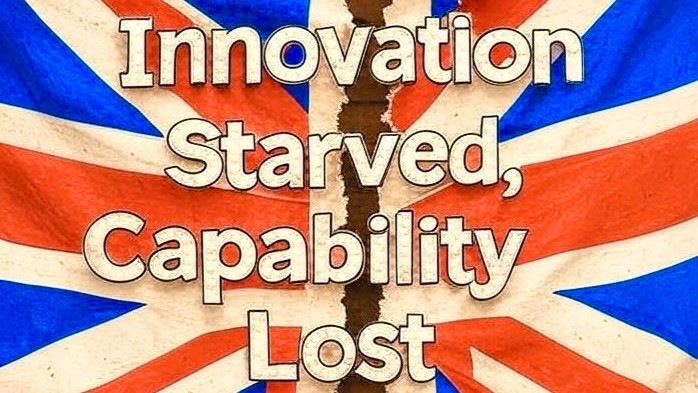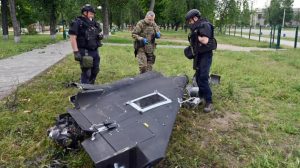Defence Paralysis: Innovation Starved, Capability Lost
Understanding the profound challenges shaping our collective security future is critical. The term “Defence Paralysis” encapsulates a growing crisis. Contemporary military strength extends beyond mere numbers of tanks and troops. In 2025, the emphasis is on agility, innovation, and a relentless pursuit of superiority in technology and strategic ideas. Sadly, numerous advanced militaries, beyond the apparent few, are stuck. They transition sluggishly, struggle to transform, and are deprived of the creative forces that genuine innovation necessitates. This guide dissects the issue: its significance, causes, and crucially, how to evade becoming ensnared in defense paralysis.
Why Defence Innovation Matters (And Why You Should Care)
Consider this deeply: deploying your elite personnel with outdated weaponry against foes refreshing their tactics daily. Does it sound fair? Certainly not. This is the substantial risk of lagging in defense. Innovation in defense is indispensable; it ensures:
- Faster decision cycles (envision real-time AI battlefield insights)
- Enhanced survivability and efficacy (drones dodging next-gen jamming)
- Deterrence and global credibility (proving to adversaries you remain a formidable opponent)
When nations treat innovation as a bureaucratic exercise rather than a tactical imperative, they gamble away the strategic advantage hard-won by their predecessors.
The Symptom: What Does “Defence Paralysis” Look Like?
Defence paralysis signifies a military’s institutional incapacity to swiftly adapt, deploy, and professionally scale new technologies or doctrines amidst evolving threats. Typical indicators include:
- Slow acceptance of emerging tech (AI, hypersonics, EW)
- Prolonged pilot projects, with scarce implementations reaching frontline units
- Talent migration to the private sector: “Top talents coding apps over solving EW issues.”
- Procurement systems bogged down by complexity, outlasting the technologies they intend to deliver
A Cautionary Example: Ukraine’s Decentralized Tech Boom
The Ukrainian conflict prompted a significant, ground-level tech uprising: numerous mini drone startups, makeshift software innovations, and large-scale improvisation. Initially, Western observers championed this as a fresh innovative model. Yet, by 2025, just 20–40% of Ukraine’s first-person-view (FPV) drones achieved their targets, as Russian EW systematically neutralized grassroots innovations before gaining momentum. The lesson: innovation without integration and scalability results in a fragmented “zoo of tech platforms”—striking, but not decisive.
The Causes: Why Are Militaries Innovation-Starved?
1. Bureaucratic Drag and Complex Procurement
Every defense acquisition veteran recalls tales of excellent technology perishing in paperwork. Even dynamic startups that captivate at demos frequently struggle to secure contracts. The US Department of Defense (DoD) launched accelerator initiatives like “Replicator,” targeting rapid testing, deployment, and optimization of new tech, but progress is lethargic. The dilemma: the defense marketplace isn’t engineered for agility; bureaucracy often outweighs battlefield necessity.
2. Leadership and Cultural Inertia
Despite the “genius at the edge” myth, enduring defense innovation typically relies on top-down commitment. While literature cites numerous methods—civil-military, inter-, intra-service, cultural, principal-agent, bottom-up, leadership-driven—stagnation often sees senior leaders evading risks (due to potential criticism or career repercussions), thus obstructing innovation.
3. Talent Crisis
Contemporary defense innovation requires talented individuals: coders, AI experts, engineers, and creative thinkers. However, defense contends with commercial tech for talent. Many, especially in the US, remain uninterested in a defense career unless the incentives and culture shift convincingly.
4. Reluctance to Integrate Civilian & Allied Innovation
The US was a leader in domains like 5G and quantum science. Still, allies and sometimes adversaries have since taken the lead, particularly in semiconductor advancements, directed energy, and quantum fields. Effective innovation demands collaboration—with allies, private industry, and academia. Conventional compartmentalized processes and security concerns have hindered this essential collaboration.
What Real Innovation Looks Like: Hopeful Counterexamples
Several initiatives highlight how latent innovation can be galvanized:
- Defense Innovation Unit (DIU): Reporting directly to the Defense Secretary, DIU promotes rapid sourcing and scaling of commercial technology. Its Blue Object Management Challenge involves startups solving integration, situational awareness, and AI-driven decision-making within a mere 12-week cycle.
- Defense Tech Accelerator Programs: New initiatives collaborate with private tech hubs, offering mentorship, funding, and simplified navigation through defense acquisition complexities—expediting the timeline from impressive demonstration to operable capability.
- International Collaboration: The Defense Innovation Board systematically examines successful innovation alliances, providing strategies and avoiding “innovation fratricide,” wherein parallel efforts inadvertently nullify each other.
Consequences of Paralysis: What’s at Stake
Failure to expedite defense innovation poses visible threats:
- Adversaries’ electronic warfare capabilities supersede friendly measures, as evidenced in Ukraine.
- Disjointed innovation endeavors cause platform fragmentation, logistical inefficiencies, and genuine vulnerabilities.
- Delayed uptake of AI, autonomy, and evolving systems means diminished deterrence and an escalated cost of future conflict resolution and victories.
- “Lost capability” encompasses more than hardware: it implies sacrificed lives, diminished credibility, and potentially failed missions.
Expert Tips: How to Escape the Innovation Trap
- Cut the Red Tape: Streamline procurement processes. Delays are detrimental to innovation.
- Embrace Top-Down Leadership: Risk ownership and incentivize innovative thinkers should reside with senior leadership, driving cultural reform from within.
- Partner Deeply: Collaborate with allies, academia, and cutting-edge commercial technology, fostering mutual growth and strength.
- Recruit for the Future: Cultivate a defense career path appealing to data scientists, coders, and inventors. Consider rotational models or civilian-reserve partnerships to sustain dynamic recruitment pipelines.
The Human Factor: Building a Culture of Innovation
Ultimately, defense innovation centers on people rather than gadgets:
- Promote cross-rank experimentation—where junior officers, enlisted personnel, data scientists, and engineers offer valuable insights.
- Encourage and reward genuine failure as a learning tool. Cultivate “sandbox” environments where new concepts are vetted and either elevated or set aside without endangering innovators’ careers.
- Celebrate fresh perspectives: from coders developing AI systems for logistics, to procurement officers discovering ways to integrate mainstream technology swiftly.
Borrowing from Pop Culture
Recall Iron Man’s “Jericho” demo? All theatrics, no cohesion. The defense sector needs to abandon such patterns of promise without delivery. True heroes are the diligent teams evolving ideas from sketches to networked, fielded realities.
Lived Experience: A Team’s Journey
Consider a NATO nation’s innovation incubator team, assigned in 2024 to integrate a commercial AI “Red Team” planning tool. Initially hampered by security and procurement hurdles, the project accelerated through dedicated leadership support, real partnership with end-users, and a focused accelerator effort, successfully deploying in a third of the usual time. Within a year, it significantly impacted dynamic exercises against simulated drone swarms.
Closing Thoughts: Your Role in Breaking the Cycle
Whether an innovator, leader, or procurement specialist, everyone can combat defense paralysis, a reversible decision. The future is in the hands of proactive participants.
Persevere, innovate, and remember, often the greatest breakthroughs stem from the tightest constraints.
For further expert insights and narratives about leading through innovation’s phases, engage with us, partake in discussions, and contribute to redefining innovation-age doctrines.
Keywords used: defense innovation, defense paralysis, capability loss, military technology, procurement, defense accelerator, AI in military, top-down leadership, electronic warfare, international defense collaboration, defense tech startups, defense digital transformation.













